Mizoram
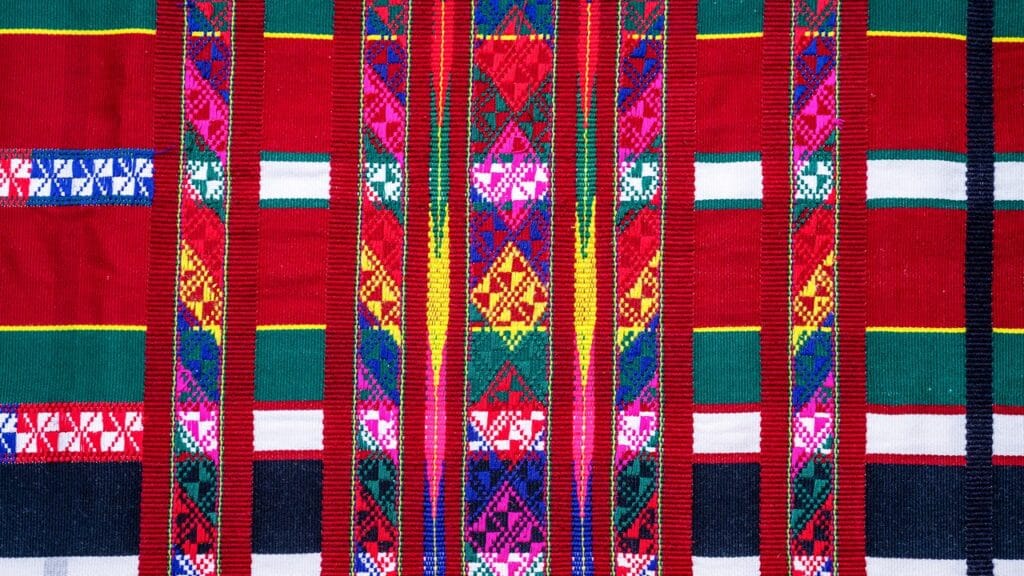
Mizoram is known for its rich textile traditions, used to decorate traditional clothing particularly the Mizo puanchei (women’s wraparound). The art involves embellishing woven textiles with intricate patterns and symbolic designs using hand-printing techniques. A woven fabric (usually cotton) is stretched and prepared for printing. Artists use brushes, stencils or freehand techniques to apply natural […]
Manipur
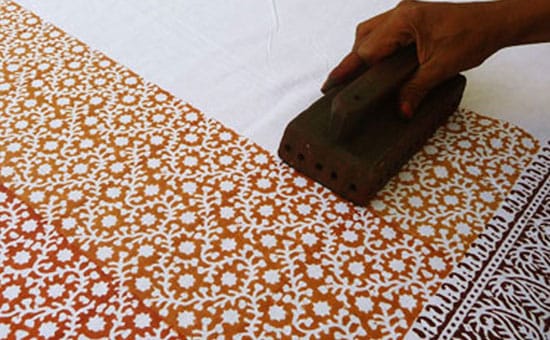
Manipur block printing is a traditional textile art that involves printing intricate patterns on fabric using carved wooden blocks and natural dyes. Block printing in Manipur developed as a decorative art form for textiles, particularly seen in traditional attire like the phanek and innaphi. Wooden blocks are hand-carved with traditional motifs, like flowers, animals, or […]
Nagaland

Nagaland cloth painting is a unique tribal art form which showcases the vibrant cultural heritage of the Nagaland tribes. It involves decorating textiles with tribal motifs, symbolic patterns, and depictions of warriors, animals, and nature. First, a woven cotton or silk fabric is cleaned and stretched as the base. Patterns are hand-drawn using charcoal or […]
Assam
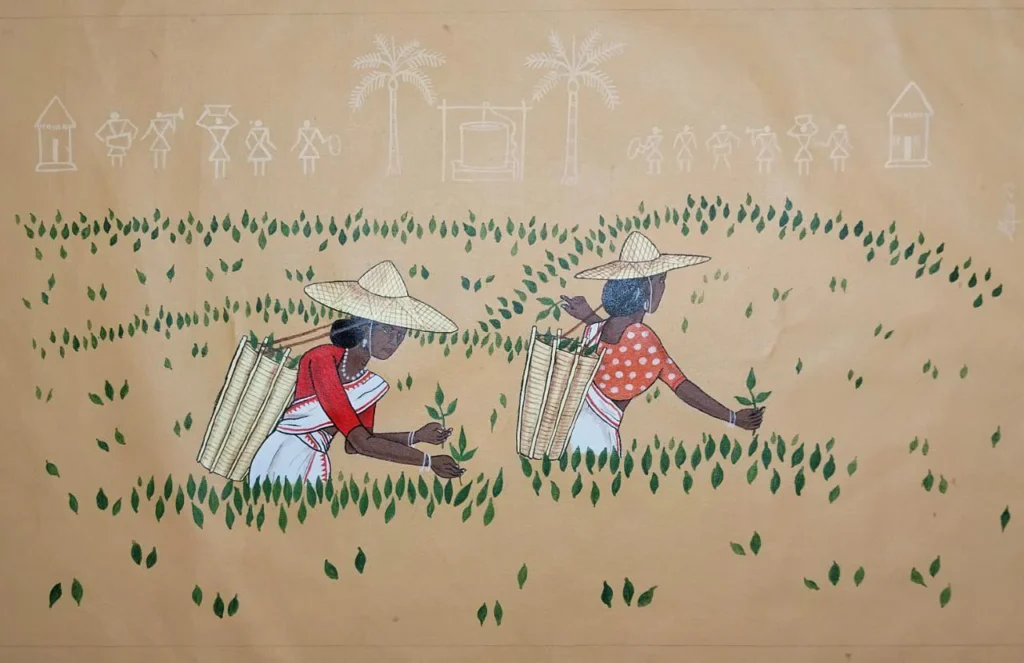
Assamese scroll painting (Pat or Satra art) is a unique art form that narrates myths, legends, and spiritual tales particularly stories from Krishna Leela and Ramayana through vibrant, intricate compositions. They can be found in Vaishnavite monasteries (satras). The artist treats a cloth scroll with tamarind seed glue for durability and smoothness. Then, figures and […]
Meghalaya
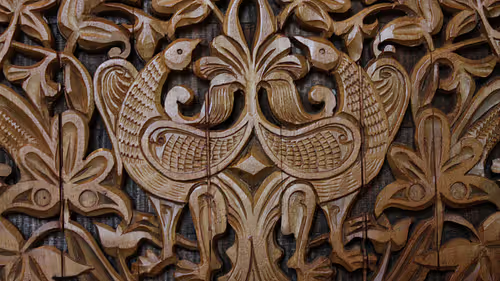
Wood carving is an age-old craft practiced by the Khasi, Jaintia, and Garo tribes of Meghalaya, often seen in homes, monoliths, and community structures. It involves carving intricate designs, human figures, and animals on wood to create decorative or functional objects, including furniture, doors, and ritual items. The artist selects and smooths a suitable hardwood, […]
Sikkim
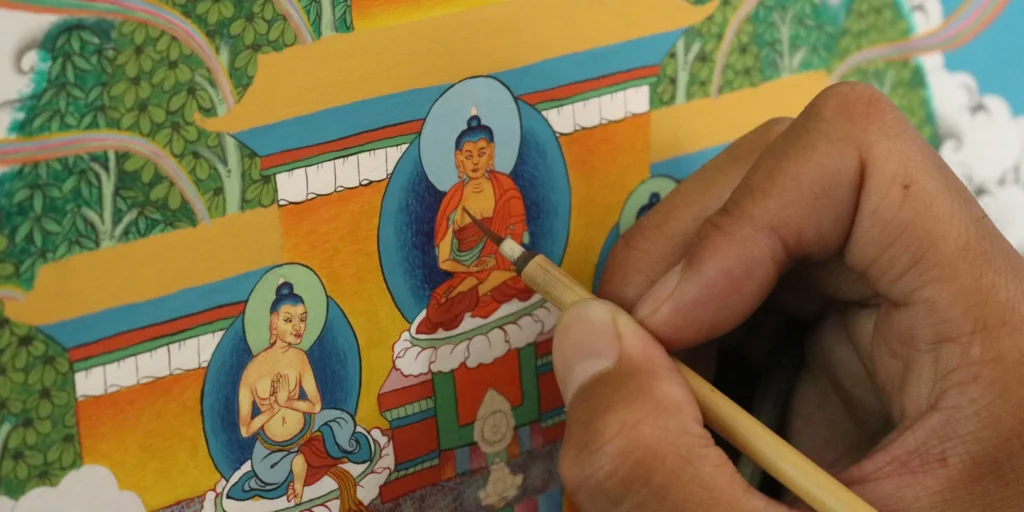
Thangka is a traditional scroll painting depicting Buddhist deities, spiritual scenes, mandalas, and narratives from Buddha’s life. It serves as a medium for meditation and teaching. Thangka paintings have their roots in Tibetan Buddhism and flourished in Sikkim around the 8th century CE with the spread of Buddhist teachings in the region. The artist prepares […]
Bihar
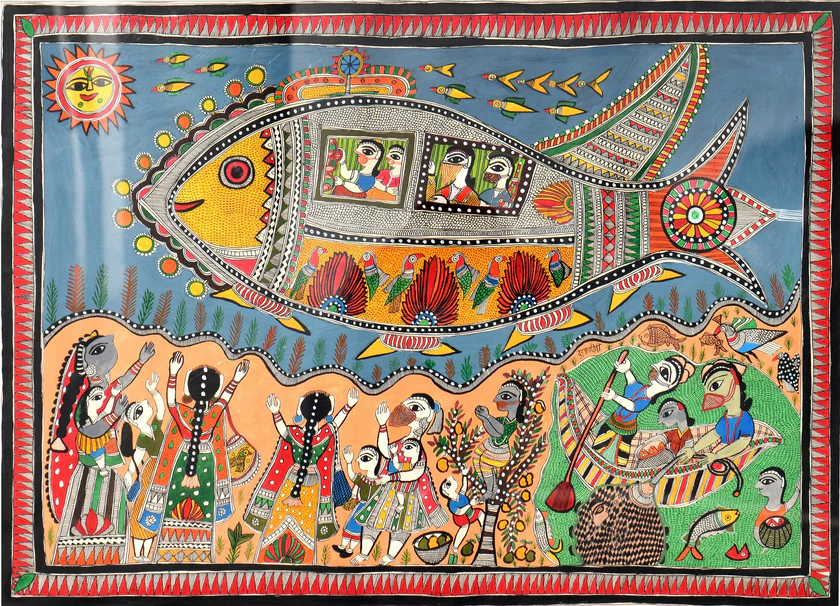
Madhubani is a traditional Indian folk art from the Mithila region of Bihar. It can be traced back to the Ramayana era (about 7th century BCE). The painting, practiced primarily by women to decorate walls during weddings and festivals, depicts mythology, nature, and daily life. This style of painting is characterized by its use of […]
Uttar Pradesh

Sanjhi art originated in the 16th century in Mathura and Vrindavan, and is known for its spiritual significance and motifs related to Krishna’s life. Sanjhi art is a paper stenciling technique where artisans create intricate designs and motifs by cutting into handmade paper with small, fine scissors. The paper stencil is placed on a surface […]
Uttarakhand
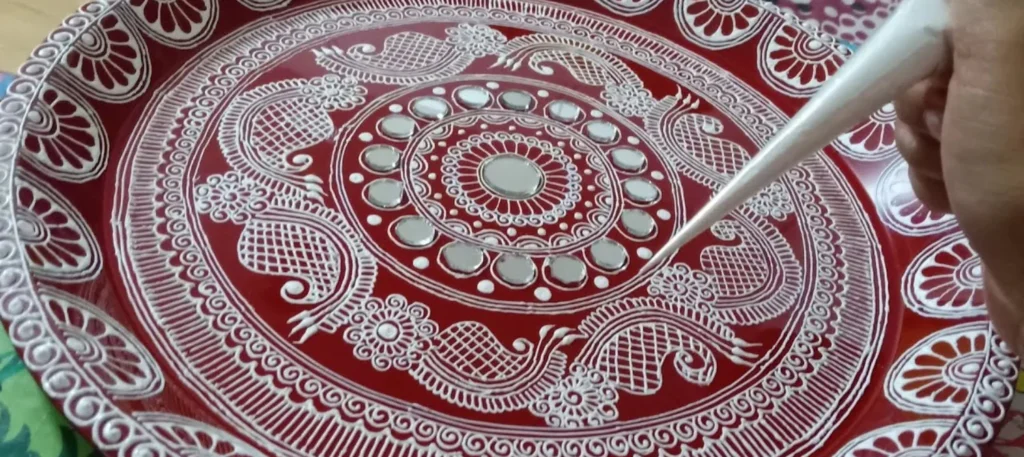
Aipan is a ritualistic art form native to the Kumaon region of Uttarakhand. Aipan consists of intricate geometric and floral patterns drawn on walls, floors, and prayer spaces to invite divine blessings. The art form is also known to offer protection against evil. The artist coats the surfaces with geru (red earth). Patterns are drawn […]
Himachal Pradesh

Kangra paintings, a refined school of Pahari miniature art, flourished in the 18th century under the patronage of Raja Sansar Chand, who encouraged local artists in the Kangra Valley. The paintings are known for their delicate brushwork, vibrant colors, and lyrical depictions of themes from Hindu mythology, particularly the depictions of Radha-Krishna and nature. The […]




